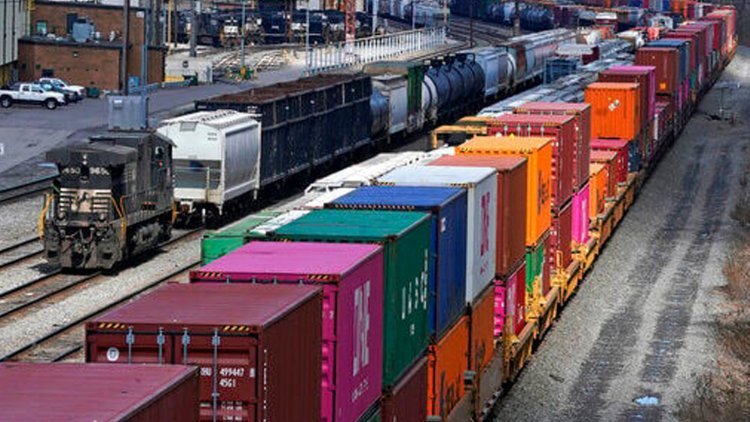A train strike is imminent and could cost the US economy $2 billion daily
The ramifications of a rail strike would quickly spread across the economy. Many companies only have enough raw materials and storage space for a few days' worth of finished goods.

If freight trains stop operating next month, it will have enormous impact on consumers in America and almost every industry.
One of the largest train unions rejected the agreement on Monday, joining three other unions that had already rejected contracts due to issues with strict timetables and the absence of paid sick time. This increases the possibility of a strike, which may begin as early as December 9 if the deadline is extended as it was on Tuesday.
The ramifications of a rail strike would quickly spread across the economy. Many companies only have enough raw materials and storage space for a few days' worth of finished goods. Both their clients and the producers of food, fuel, automobiles, and chemicals would feel the pinch.
Not to mention the commuters who would be stranded since many passenger railroads use freight railroads' property.
Congress is anticipated to intervene and impose contract terms on train workers since the economic stakes are so high. United States railroads last went on strike in 1992. Before Congress stepped in, that strike lasted two days. A legislation passed in 1926 that oversees train negotiations made it considerably more difficult for workers to go on strike, which contributed to the fact that a lengthy rail shutdown has not occurred for a century.
A rail strike could have the following effects, to name a few:
$2 BILLION A DAY
Each year, railroads transport nearly 40% of the freight in the country. In a research released earlier this fall, the railways predicted that a rail strike would cost the economy $2 billion per day. Another recent study conducted by a trade association for the chemical industry predicted that if a strike lasts for a month, 700,000 jobs would be lost as manufacturers that depend on railroads shut down, prices for almost everything rise even further, and the economy may be forced into a recession.
Even though some companies would try to switch over to using trucks for shipments, there aren't nearly enough of them available. To handle everything that railroads deliver, according to the Association of American Railroads trade group, 467,000 additional trucks per day would be required.
CHEMICALS RUN DRY
In order to prevent tank trains carrying hazardous substances from becoming stranded, railroads will stop shipping hazardous chemicals roughly a week before to the strike deadline, which will have an immediate impact on chemical factories and refineries.
The American Chemistry Council's Jeff Sloan warned that by the time a rail strike actually starts, chemical factories may be on the verge of closing.
This would make it difficult to obtain the chlorine that water treatment plants use to disinfect the water, as they may only have a week's worth on hand. Without the chemicals that are a component of the formula, it would be challenging for manufacturers to produce anything from plastic. Customers will also pay more for gasoline if refineries close, either because they won't have access to the raw materials needed to create fuel or because there won't be any railroads to transport sulfur-containing byproducts.
Even though the gas typically travels via pipelines, chemical plants also produce carbon dioxide as a byproduct, so the supply of carbon dioxide that beverage manufacturers use to carbonate soda and beer would also be constrained.
PASSENGER ISSUES
Nearly all of Amtrak's long-distance trains travel over the freight network, and over half of all commuter rail systems rely at least in part on tracks that are owned by freight railways.
In order to prevent passengers from being left stranded in far-flung regions of the country while still travelling to their destination, Amtrak cancelled all of its long-distance trains back in September.
Major commuter rail services also issued warnings at the time that some of their operations would be interrupted in the case of a rail strike, including those in Chicago, Minneapolis, Maryland, and Washington State.
FOOD FEARS
According to Tom Madrecki, vice president of supply chain for the Consumer Brands Association, it would take approximately a week for shoppers to notice shortages of items like cereal, peanut butter, and beer at the grocery store.
According to him, rail transports about 30% of all packaged food in the United States. For denser, heavier products like soup cans, that percentage is significantly higher. For other products, including cereal, cooking oils, and beer, entire businesses are based on rail shipments of both finished goods and raw materials like grain, barley, and peanuts.




 admin
admin 




















